Revolutionary New Advance for Your Children's Eye Care.
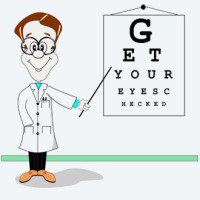
WHAT IS HOME VISION THERAPY?
What is HOME VISION THERAPY - It is a revolutionary new advance in eye care.
This computerized program that helps eliminate the symptoms of eyestrain. This is the most common visual complaint of students and office workers today who are using, desk top or lap top computers, any hand held games, and specially the cell phone
Think of it like fitness training for your eye muscles. It’s a re-education program for your eyes. And, just like learning to ride a bike, once you teach your eye muscles how to work their best, they don’t forget.
Vision therapy (also called orthoptics or vision training) is an individualized program of eye exercises and other methods to treat non-refractive vision problems. The therapy is usually performed in an optometrist's office, but most treatment plans also include daily visual tasks and eye exercises to be performed at home.
Optometrists who specialize in vision therapy and the treatment of learning-related vision problems are sometimes called behavioral optometrists or developmental optometrists.

PEDIATRIC VISION PROBLEMS AND SYMPTOMS
Many children have vision problems other than simple refractive errors such as:
Nearsightedness,
Farsightedness
Astigmatism.
These "other" vision problems include:
Amblyopia ("lazy eye")
Eye alignment or eye teaming problems
Focusing problems
Visual perceptual disorders
Left untreated
These non-refractive vision problems can cause:
Eyestrain,
Fatigue,
Headaches
Learning problems
According to the College of Optometrists in Vision Development (COVD), one study indicates 13% of children between the ages of 9 and 13 suffer from moderate to severe convergence insufficiency (an eye teaming problem that can affect reading performance), and as many as one in four school-age children may have at least one learning-related vision problem.
Signs and Symptoms of Learning-Related Vision Problems:
There are many signs and symptoms of learning-related vision disorders, including:
Blurred distance or near vision, particularly after reading or other close work
Frequent headaches or eye strain
Difficulty changing focus from distance to near and back
Double vision, especially during or after reading
Avoidance of reading
Easily distracted when reading
Poor reading comprehension
Loss of place, repetition, and/or omission of words while reading
Letter and word reversals
Poor handwriting
Hyperactivity or impulsiveness during class
Poor overall school performance
If your child exhibits one or more of these signs or symptoms and is having problems in school, give us a call us to schedule a comprehensive children's vision exam.
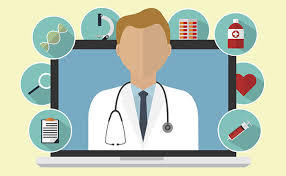
What is Recommended Pediatric Eye Exam Schedule for Children?
Recommended Pediatric Eye Exam Schedule for ChildrenThe AOA recommends that children have a comprehensive eye exam every two years.
More specifically:
· First 12 months – Infants, particularly premature babies, should have an eye exam in the first 12 months.
· Age 2 or 3 years – Preschool is a critical time for learning. Preschoolers should have an eye exam when they are old enough to understand and respond to the exam.
· Age 5 – Kindergarten is also a critical time for learning. Kindergartners should have an eye exam before entering school.
· Children without identified vision problems should then have a comprehensive eye exam every two years.
· Children who wear glasses or who have other eye conditions should see the eye doctor at least annually, or more often, as recommended by the doctor.
A comprehensive children's vision exam includes tests performed in a routine eye exam, plus additionaltests to detect learning-related vision problems. These extra tests may include an assessment of eye focusing, eye teaming, and eye movement abilities (also called accommodation, binocular vision, and ocular motility testing). Also, depending on the type of problems your child is having, we may recommend other testing, either in our office or with a children's vision and/or vision development specialist.
Vision Therapy
If it turns out your child has a learning-related vision problem that cannot be corrected with regular glasses or contact lenses, then special reading glasses or vision therapy may help. Vision therapy is a program of eye exercises and other activities specifically tailored for each patient to improve vision skills.
Vision and Learning Disabilities
A child who is struggling in school could have a learning-related vision problem, a learning disability or both. Vision therapy is a treatment for vision problems; it does not correct a learning disability. However, children with learning disabilities may also have vision problems that are contributing to their difficulties in the classroom.
Schedule a Comprehensive Eye Exam
If you suspect your child has a vision problem that may be affecting their performance in school, the first step is to schedule a comprehensive eye exam so we can determine if such a problem exists. If learning-related vision problems are discovered, we can then discuss with you whether a program of vision therapy would be helpful.
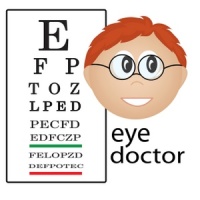
Why Do Your Child Need Vision Therapy?
WHY DO YOUR CHILD NEED VISION THERAPY
Eyestrain is not a seeing problem, so glasses alone won’t fix the problem. It’s an eye muscle problem. Our eyes were never intended for spending long periods of time on close work – such as reading or at a computer. Eyestrain is caused by the visual demands of modern living.
The 12 muscles and the lenses of the eyes must work together as a team — learning to focus and relax as needed. If the eye muscles are not coordinated, they fatigue. The result can be eyestrain symptoms. Eye exercises can improve how your eye muscles work and relieve your symptoms. If the muscles of the eyes and the lenses do not work together, beside the eyestrain, it can cause double vision, at near and/ or distance, losing your place when you read, jump lines, re-read the same word, jump a word, with low comprehension, and eventually losing interest in reading and falling behind in school.
Learning-Related Vision Problems
There's no question that good vision is important for learning. Experts say more than 80% of what your child is taught in school is presented to them visually.
To make sure your child has the visual skills they need for school, the first step is to make sure your child has 20/20 eyesight and that any nearsightedness, farsightedness and/or astigmatism is fully corrected with glasses or contact lenses. But there are other, less obvious learning-related vision problems you should know about as well.
Good Vision Is More Than 20/20 Visual Acuity
Your child can have "20/20" eyesight and still have vision problems that can affect their learning and classroom performance. Visual acuity (how well your child can see letters on a wall chart) is just one aspect of good vision, and it's not even the most important one. Many nearsighted kids may have trouble seeing the board in class, but they read exceptionally well and excel in school.
Other important visual skills needed for learning include:
Eye movement skills - How smoothly and accurately your child can move their eyes across a printed page in a textbook.
Eye focusing abilities - How well your child can change focus from far to near and back again (for copying information from the board, for example).
Eye teaming skills - How well your child's eyes work together as a synchronized team (to converge for proper eye alignment for reading, for example).
Binocular vision skills - How well your child's eyes can blend visual images from both eyes into a single, three-dimensional image.
Visual perceptual skills - How well your child can identify and understand what he sees, judge its importance, and associate it with previous visual information stored in his brain.
Visual-motor integration - The quality of your child's eye-hand coordination, which is important not only for sports, but also for legible handwriting and the ability to efficiently copy written information from a book or chalkboard.
Deficiencies in any of these areas can significantly affect your child's learning ability and school performance.
Many Kids Have Vision Problems That Affect Learning
Many kids have undetected learning-related vision problems. In fact, children are often misdiagnosed with learning problems or ADD/ADHD when, in fact, they have a vision problem.
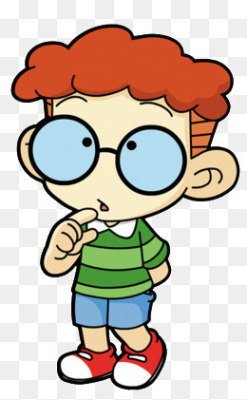
Can Vision Therapy Eliminate the Need for Glasses?
Can Vision Therapy Eliminate the Need for Glasses?
Vision therapy is NOT the same as self-help programs that claim to reduce refractive errors and the need for glasses. There is no scientific evidence that these "throw away your glasses" programs work, and most eye care specialists agree they are a hoax.
In contrast, vision therapy is approved by the American Optometric Association (AOA) for the treatment of non-refractive vision problems, and there are many studies that demonstrate its effectiveness.
The degree of success achieved with vision therapy, however, depends on a number of factors, including the type and severity of the vision problem, the patient's age and motivation, and whether the patient performs all eye exercises and visual tasks as directed. Not every vision problem can be resolved with vision therapy.
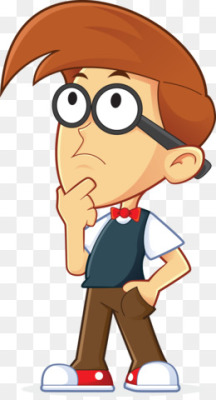
Vision Therapy Is Customized and Specific for My Childrens?
Vision Therapy Is Customized and Specific
YES-The activities and eye exercises prescribed as part of a vision therapy program are tailored to the specific vision problem (or problems) a child has. For example, if a child has amblyopia, the therapy usually includes patching the strong eye, coupled with visual tasks or other stimulation techniques to develop better visual acuity in the weak eye. Once visual acuity is improved in the amblyopic eye, the treatment plan may then include eye teaming exercises to foster the development of clear, comfortable binocular vision to improve depth perception and reading comfort.
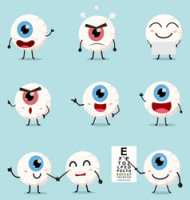
Vision Therapy and Learning Disabilities
Vision Therapy and Learning Disabilities
Vision therapy does not correct learning disabilities. However, children with learning disabilities often have vision problems as well. Vision therapy can correct underlying vision problems that may be contributing to a child's learning problems.
Be sure to tell us if your child has been diagnosed with a learning disability. If we find vision problems that may be contributing to learning problems, we can communicate with your child's teachers and other specialists to explain our findings. Often, vision therapy can be a helpful component of a multidisciplinary approach to remediating learning problems.
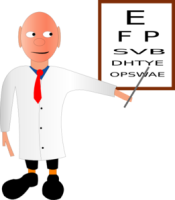
How Does Vision Therapy Work?
HOW DOES VISION THERAPY WORK?
Computerized Home Vision Therapy is fun and easy. You learn a series of eye exercises – done at a computer. Kids say it’s like a computer game. . The computerized Home Vision Therapy program is tailored to your own personal binocular problem.
You can practice at home, at school, or at your office, wherever you use a computer. You usually practice it five days a week. Most patients finish the program in eight to twelve weeks. Afterward, you do weekly maintenance sessions for a few months – to reinforce your new skills.
Upon successful completion of therapy, your eyes function comfortably and efficiently as a team. Your symptoms will be eliminated or significantly reduced. Near vision tasks will become more enjoyable and rewarding. You will have a longer attention span – and better comprehension
Vision training is like fitness training for the eyes – coordinating eye muscles for the difficult visual tasks in today’s world.
Good vision is more than just the ability to see clearly. It is the ability to understand and respond to what is seen – from whatever source – for hours on end. The vision skills that served our ancestors — seeing animals and enemies at a distance — are not enough for youngsters in today’s school environment. Check your child for near vision problems with our children’s vision screening test.
Students today read almost three times the number of textbooks as their parents did – and recently, many of the students do the games, movies, readings, and the homework by using computers.
A large part of learning is done visually – reading, chalkboard work, and computer use are among the tasks students tackle all day long, day after day. Each involves the visual abilities of seeing clearly and understanding visual information – usually at less than an arm’s length or even as close as 8" from the eyes. Such near vision work, demands very different skills from the distance vision tested by the 20/20 chart.
Just as many of us don’t have good 20/20 distance vision, many of us also have problems with the skills required to sustain near vision tasks.
Near vision requires that your eyes work as a team – called binocular vision –
· to converge — aiming together to combine the images from each eye into one,
· to accommodate – curving the lens to bring images into clear focus,
· to fixate – moving the eyes across a page fluidly and then jumping to the next line.
Learning can be impaired if eye movements are slow or clumsy if the eyes jump, “stutter” or lose their place when reading a book or from a computer screen.
If your child does not have adequate near vision skills, asthenopia or eyestrain symptoms may occur. It’s not a seeing problem, so glasses alone won’t fix it. It’s an eye muscle problem. Check your child for binocular problems with our CHILDREN’S VISION SCREENING TEST.
If good visual skills have not been developed, learning is difficult and stressful. Children may react in one or more ways, including:
· avoiding reading and other near visual work as much as possible,
· attempting to do the work but with decreased understanding,
· being an “underachiever,”
· having a short attention span,
· getting fatigued easily.
Poor near vision skills can impede remedial efforts by interfering with the learning process.
Computerized Vision Therapy has been proven to be an effective tool in helping people with vision-related learning problems.
When your child develops good visual skills through vision therapy, it’s like learning to ride a bike. Your eyes never forget
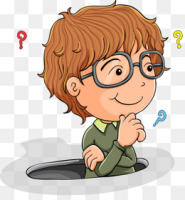
FAQ
Can vision therapy cure learning disabilities?
Vision therapy cannot correct learning disabilities. However, children with learning disabilities often have vision problems as well. Vision therapy can correct underlying vision problems that may be contributing to a child's learning problems.
Our active 1-year-old boy needs glasses to correct his farsightedness and the tendency for his eyes to cross. But he pulls them off the second they go on. We've tried an elastic band, holding his arms, tape... He just struggles and cries. How do we get him to wear his glasses?
In most cases, it just takes awhile for a toddler to get used to the sensation of wearing glasses. So persistence is the key. Also, you may want to put his glasses on as soon as he wakes up - this will usually help him adapt to the glasses easier.
But it's also a good idea to recheck the prescription and make sure his glasses were made correctly and are fitting properly. Today, there are many styles of frames for young children, including some that come with an integrated elastic band to help keep them comfortably on the child's head. Bring your son and the eyewear to our office. Even if you didn't purchase the glasses from us, we will be happy to give you our opinion about why your son is having a tough time wearing them and what you can do about it.
Our 3-year-old daughter was just diagnosed with strabismus and amblyopia. What is the likelihood of a cure at this age?
With proper treatment, the odds are very good. Many researchers believe the visual system can still develop better visual acuity up to about age 8 to 10. If your daughter's eye turn (strabismus) is constant, it's likely surgery will be necessary to straighten her eyes in order for her therapy for amblyopia (or "lazy eye") to be successful. Strabismus surgery often is followed by eye patching and vision therapy (also called orthoptics) to help both eyes work together as a team. See a pediatric ophthalmologist who specializes in strabismus surgery for more information.
My daughter (age 10) is farsighted and has been wearing glasses since age 2. We think she may have problems with depth perception. How can she be tested for this, and if there is a problem, can it be treated?
We can perform a very simple stereopsis test to determine if your daughter has normal depth perception. In this test, she wears "3-D glasses" and looks at a number of objects in a special book or on a chart across the room. If she has reduced stereopsis, a program of vision therapy may help improve her depth perception.
We have an 11-year-old son who first became nearsighted when he was 7. Every year, his eyes get worse. Is there anything that can be done to prevent this?
A number of recent studies suggest it may be possible to slow myopia progression, or even reverse it, during childhood. Currently, four types of treatment are showing promise for controlling myopia: atropine eye drops, multifocal contact lenses, orthokeratology ("ortho-k") and multifocal eyeglasses. A comprehensive examination will help determine which of these options might help the individual needs of your son.
My 7-year-old son's teacher thinks he has "convergence insufficiency." What is this, and what can I do about it?
Convergence insufficiency (CI) is a common learning-related vision problem where a person's eyes don't stay comfortably aligned when they are reading or doing close work. For reading and other close-up tasks, our eyes need to be pointed slightly inward (converged). A person with convergence insufficiency has a tough time doing this, which leads to eyestrain, headaches, fatigue, blurred vision and reading problems. Usually, a program of vision therapy can effectively treat CI and reduce or eliminate these problems. Sometimes, special reading glasses can also help.
My son is 5 years old and has 20/40 vision in both eyes. Should I be concerned, or could this improve with time?
Usually, 5-year-olds can see 20/25 or better. But keep in mind that visual acuity testing is a subjective matter - during the test, your child is being asked to read smaller and smaller letters on a wall chart. Sometimes, kids give up at a certain line on the chart when they can actually read smaller letters. Other times, they may say they can't read smaller letters because they want glasses. (Yes, this happens!) Also, if your son had his vision tested at a school screening (where there can be plenty of distractions), it's a good idea to schedule a comprehensive eye exam to rule out nearsightedness, astigmatism or an eye health problem that may be keeping him from having better visual acuity.
My daughter has been diagnosed with refractive amblyopia due to severe farsightedness in one eye. She just got her glasses, and the lens for her bad eye is much thicker than the other lens. She complains that the glasses make her dizzy, and she refuses to wear them. Can anything be done about this?
In situations like this, where one eye needs a much stronger correction than the other, contact lenses are a better option. With glasses, the unequal lens powers cause an unequal magnification effect, so the two eyes form images in the brain that are different in size. This can cause nausea and dizziness because the brain may not be able to blend the two separate images into a single, three-dimensional one. And, of course, the glasses will be unattractive because one lens will be much thicker than the other.
Even if your child is quite young, she can probably handle contact lens wear. Contact lenses don't cause the differences in image magnification that glasses do. Continuous wear lenses (worn day and night for up to 30 days, then discarded) or one-day disposable lenses may be good options.
Keep in mind that amblyopia is a condition where one eye doesn't see as well as the other, even with the best possible correction lens in place. Simply wearing the contacts may not improve the vision in her weak eye. Usually a program of vision therapy will also be needed.
